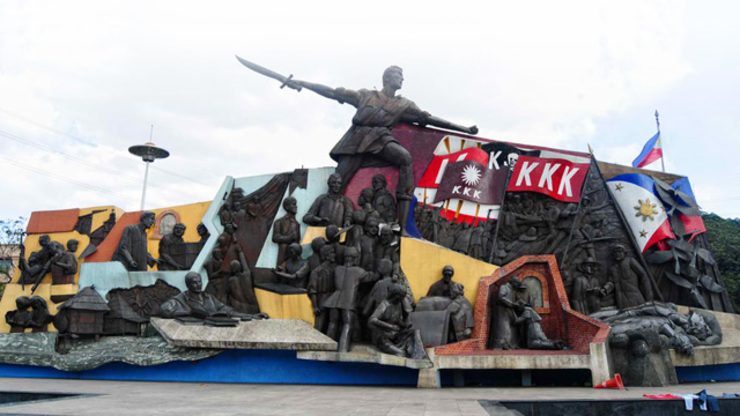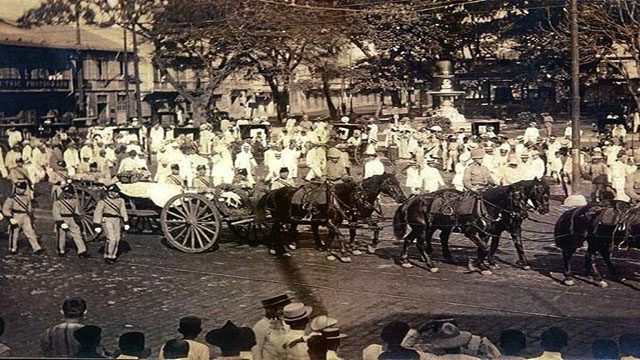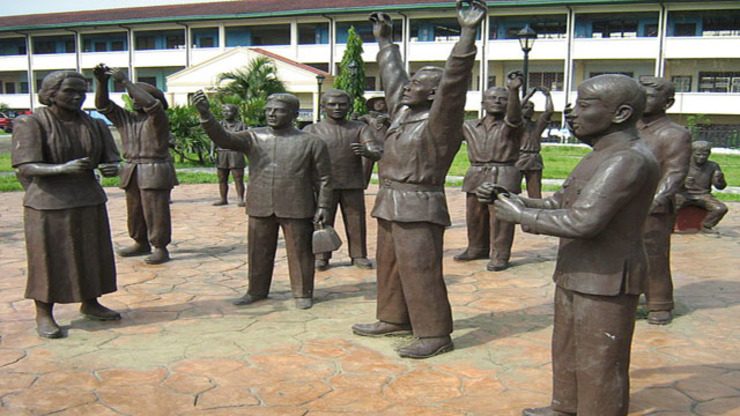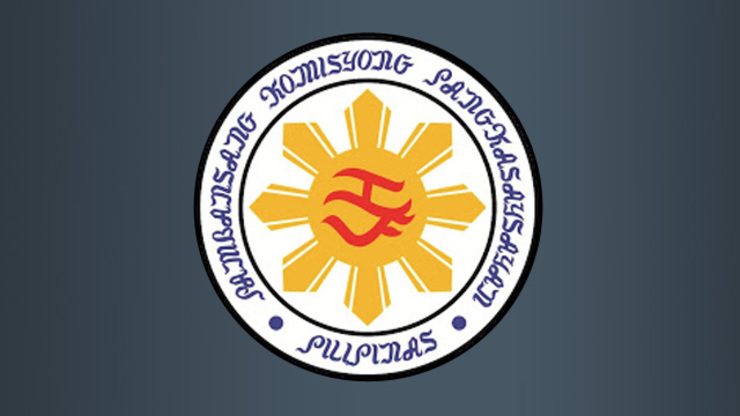SUMMARY
This is AI generated summarization, which may have errors. For context, always refer to the full article.

MANILA, Philippines (UPDATED) – Celebrated as early as 1931, National Heroes Day honors and remembers all Philippine national heroes, particulary those who don’t have their own special holidays or observances.
Despite its lofty title, today’s holiday does not only commemorate prominent figures in Philippine history, but also honors unknown Filipinos, past and present, who have given much to the cause of freedom, justice, and Philippine independence and nationhood.
Here are a few facts related to the occasion.
1. National Heroes Day was celebrated even before the country’s independence from the US
In 1931, when the Philippines was still an unincorporated territory of the United States, the Philippine legislature enacted Legislature Act 3827. This declared the last Sunday of August a holiday for the observance of National Heroes Day.
Despite being an American territory, the Philippines was allowed to commemorate national heroes, as support for Philippine Independence in both the United States and in the Philippines emerged in the 1920s and 1930s.
2. After 76 years, the observance of National Heroes Day was moved from Sunday to Monday
Former president Gloria Macapagal Arroyo issued in 2007 Republic Act 9492, which mandated that if the date of a regular or nationwide special holiday falls on a Wednesday, the holiday is to be observed on the Monday of that week. In addition, if a holiday falls on a Sunday, then the holiday shall be observed on the Monday of the following week.
As National Heroes Day was celebrated on the last Sunday of August, the Act changed the day of its observance to the last Monday of August.
“Holiday economics” was the Arroyo administration’s rationale behind moving dates of holidays. It was believed that with holidays extending to the weekends, the economy is boosted by giving citizens the opportunity to engage in domestic tourism. However, the policy has been criticized for giving frequent holidays, leading to the loss of work hours in industrial and business sectors.
3. There are only two heroes who have their own national holidays
Part of the reason for having a National Heroes Day is to commemorate Filipino heroes who didn’t have their own national holidays. So far, only two Filipino heroes have special holidays that are officially commemorated: Jose Rizal and Andres Bonifacio.

Rizal is honored on his death anniversary, December 30, through the First Philippine Republic’s Decree of 1898, which then president Emilio Aguinaldo decreed as a day of national mourning. In contrast, Bonifacio is honored on his birthday, November 30, which was made into a holiday by the Philippine Legislature Act 2946 of 1921.
4. There was a ‘National Heroes Year’
This year was 1996, the centennial of the 1896 Philippine Revolution against Spain.
In remembrance of the revolution, and to project all Filipinos – whether folk, local, or regional – as national heroes, former president Fidel Ramos issued Proclamation 510 in 1994, declaring 1996 as the Year of Filipino Heroes. It was dedicated to all Filipinos who directly or indirectly gave meaning and contributed to freedom, justice, and nationhood in the Philippines.
5. National Heroes Day was assigned in August due to the Cry of Pugad Lawin/Balintawak

The Cry heralded the formal start of the Filipino insurrection against Spanish colonial rule by members of the Katipunan revolutionary group, when they gathered to discuss plans for the upcoming revolution and tore up their cedulas (tax certificates) in defiance of Spanish authorities. The events that involved the Cry ranged from as early as August 17 to as late as August 26.
The date and location of the Cry, however, has been a longstanding dispute among historians. Initially, from 1911 to 1962, the Philippines officially commemorated the Cry on August 26, calling the event “The Cry of Balintawak.” Come 1963, following the recommendations of historian Teodoro Agoncillo, the date was changed to August 23 and the location to Pugad Lawin.
Issues have been raised regarding the validity of the Cry having taken place in Pugad Lawin, as firsthand accounts showed little evidence to support it.
As it was the general consensus that the Cry took place in the latter days of August, and with the commemoration of the Cry slowly evolving over the years into the commemoration of all Filipino heroes, National Heroes Day was set in the last week of August.
6. There are no official policies or laws for nominating individuals to the status of national hero
There have been attempts to do so, though. In March 1993, the National Heroes Committee was created to study, evaluate and recommend historic Filipinos to become national heroes. The committee initially worked for 3 years and eventually produced a definition of national heroes: those who have a concept of nation and aspire and struggle for the nation’s freedom and who define and contribute to the freedom, order, the quality of life and destiny of a nation.
In 1995, three more criteria were added: a hero is part of the people’s expression, a cultural icon whose life and works are internalized by the people, and one who thinks of future generations. In addition, choosing a hero entails looking into the entire process that makes a person a hero and not just specific events in his or her history.
Yet no action has been taken to officially proclaim certain historical figures as Philippine national heroes, as the government feared it might raise divisive debates over the choices, and lead to a flood of requests for more figures to become official national heroes.

Today policies on proclaiming national heroes are largely abandoned. According to the National Historical Commission, individuals become heroes via an organic process in which the individual has enough acclamation and acknowledgment from the masses that their life and works were indeed heroic, thus enshrining them in the cultural consciousness of a people as a hero.
7. There is no official list of Philippine national heroes
As there are no official policies for nominating national heroes, it follows that there is also no official list of national heroes, though there was an attempt to have such a roster.
In 1995, after adopting criteria for the nomination of national heroes, the NHC recommended 9 Filipino figures to be proclaimed as national heroes:
- Jose Rizal
- Andres Bonifacio
- Emilio Aguinaldo
- Apolinario Mabini
- Marcelo H. Del Pilar
- Sultan Dipatuan Kudarat
- Juan Luna
- Melchora Aquino
- Gabriela Silang
There were also efforts to nominate just one figure to be the country’s sole national hero, with popular candidates being Jose Rizal and Andres Bonifacio. But this has not been acted upon. – Rappler.com
Sources: Reference And Research Bureau Legislative Research Service Selection and Proclamation of National Heroes and Laws Honoring Filipino Historical Figures, Malacañang: National Heroes Day, Republic act No. 9492, House Bill 4081, Balintawak: The Cry for Nationwide Revolution, Proclamation No. 510 s. 1994, Philippine Information Agency: Monday Holiday Remembers Historic Cry of Balintawak.
Add a comment
How does this make you feel?
There are no comments yet. Add your comment to start the conversation.